Can you think of a fruit that isn’t round?
The first one that’ll come to your mind is probably bananas. But what else?
Even if you strain your mind and concentrate, you’ll probably only come up with five or six fruits. That’s because most fruits around us daily are round, such as peaches, berries, oranges, and so on.
Luckily for you, we compiled every fruit that isn’t round in this list, so you can amaze your friends if one of them decides to pop the tricky question: how many fruits around us aren’t round?
Examples of A Fruit That Isn’t Round
1. Banana

Banana easily gained a first place on our list because it’s the most common fruit that isn’t round that we know of, if that makes any sense.
Due to the fruit’s vast popularity, most countries around the globe now consume bananas. Even the countries that can’t plant the yellow fruit import it from outside. Not only that but there are also a lot of varieties of bananas available, thanks to biotechnology.
There are now seedless bananas, bananas with seeds, and even pink bananas.
2. Durian
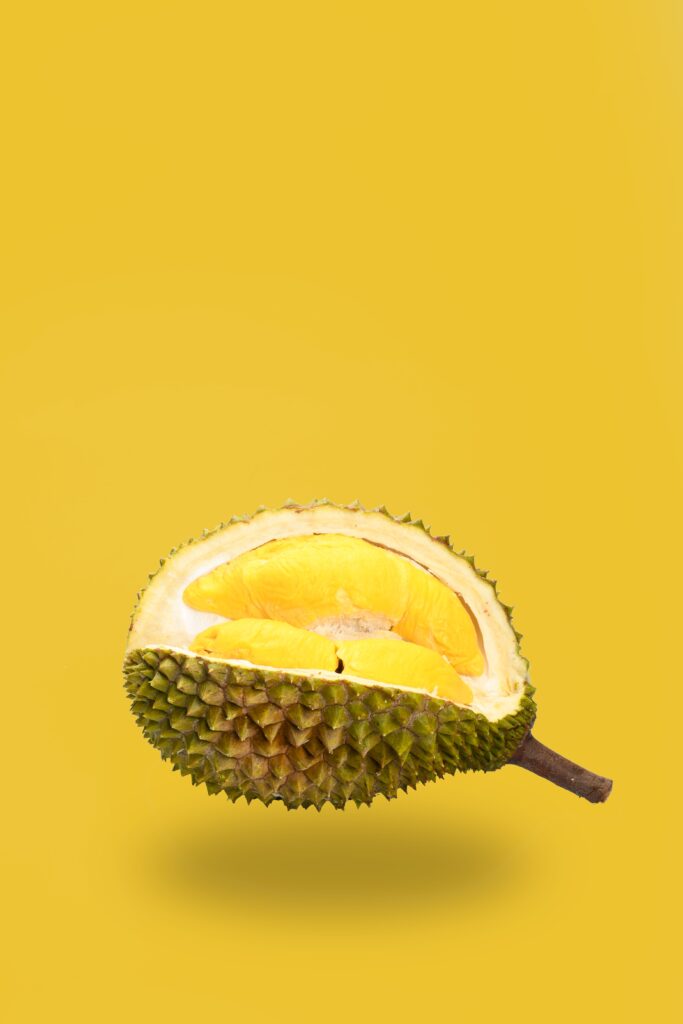
The durian fruit is a bit controversial. Some people say it’s very good-tasting and associate it with the taste of vanilla and caramel. On the other hand, some countries ban its use because of its strong fragrance. It’s also commonly known for having a high-fat content—about half of your required daily intake.
The clashing opinions are probably because it’s grown in three different ways, according to the country and the region. Generally, it’s only famous in South Asia.
3. Jackfruit
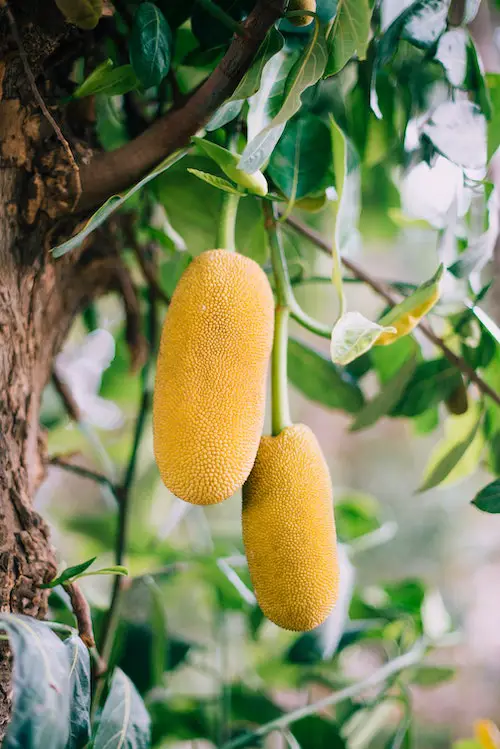
Jackfruits look a bit like durians on the outside, but they’re entirely different on the inside. People eat durianas a whole when peeled, while jackfruit contains many separate slices that you take out to eat.
These fruits grow on Jack trees, which are the largest fruit trees on earth. They’re most common in Southeast Asia and South Asia.
4. Carambola
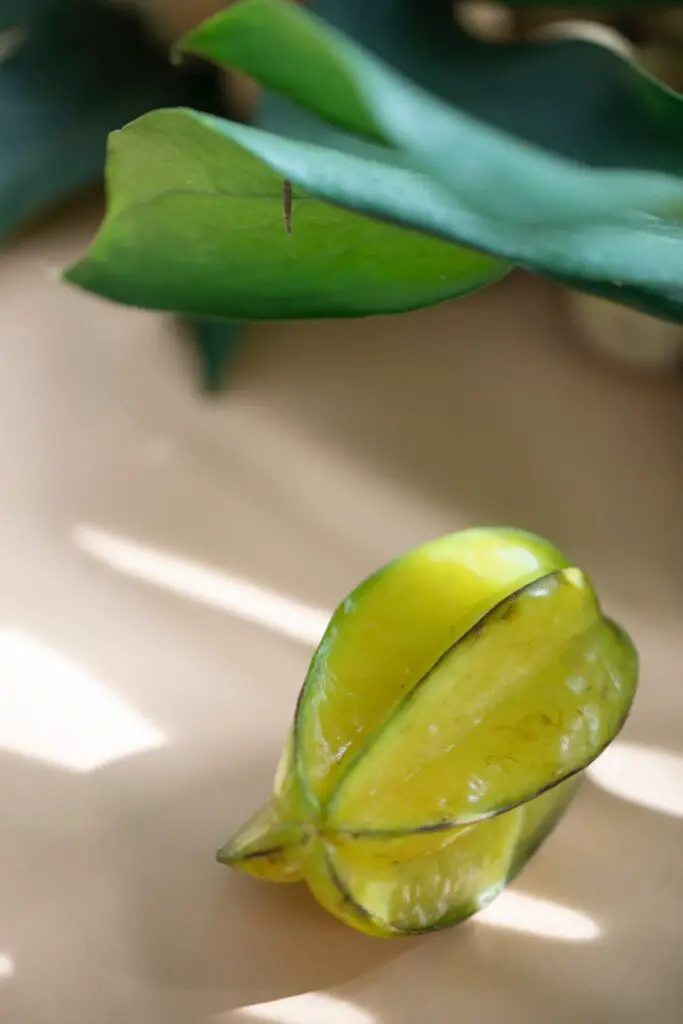
If you’re not familiar with carambola fruit, the name ‘star fruit’ may ring a bell or two. The fruit is best known for, well, its star-like shape. That alone makes is a fruit that isn’t round. When you cut it in half, the cross-section appears like a star, which is pretty cool if you ask us.
Carambolas mostly grow in tropical regions; that’s why you may not have seen them before. People usually eat them raw or cooked in different dishes. Some countries also use them as flavors in some cocktails due to their sweet and sour taste.
5. Date
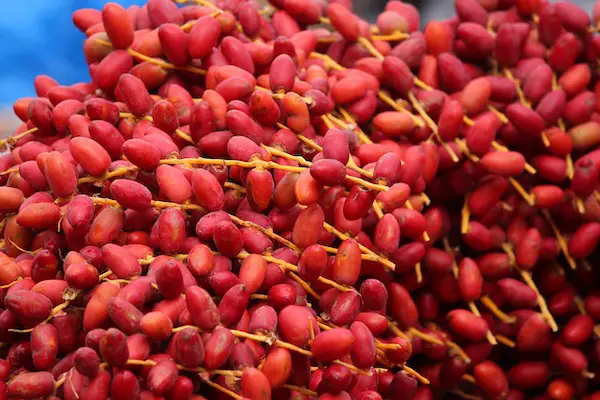
If you’re not familiar with dates, imagine the clusters that dangle down from palm trees. Yes, these are dates.
They’re more common in the Middle East, which is their origin, so there’s a high chance you haven’t tasted one before. Historians believe that their existence dates back to the Mesopotamian era, no pun intended.
Dates are elliptical and sweet-tasting; their high sugar content makes them on the no-no list for diabetic patients.
6. Mango
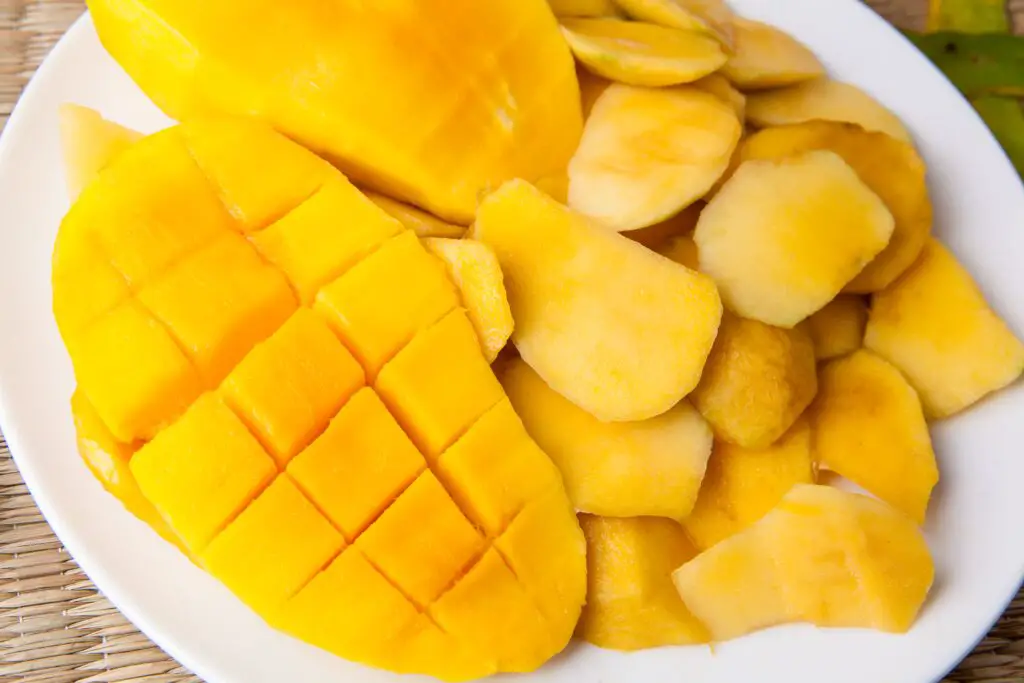
Mangoes are among the most popular fruits on earth, and they’re among the few ones on this list that are classified as superfruits. This is because they have a wide range of benefits, including physical and psychological benefits. Aside from this, it is also one common example of a fruit that isn’t round.
Mangoes are originally Asian, as most tropical fruits are. They’re the national fruits of India and Pakistan, and the mango tree is the national tree of Bangladesh. So, it’s obvious the Asians love their mangoes!
7. Fig
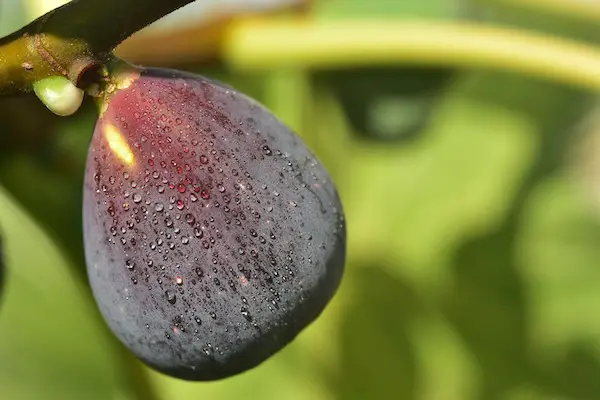
Figs are beautiful fruits that come in an array of catchy colors, such as purple and green. They originated in Asia, but they’re now grown in various countries around the globe.
Figs have a sugary, sweet taste, and their seeds make a pleasing crunchy feel in your mouth as you chew on the fruit. That said, figs emit a sour smell when they ripen. Collecting themIt goes away when they’re collected, though.
8. Salak
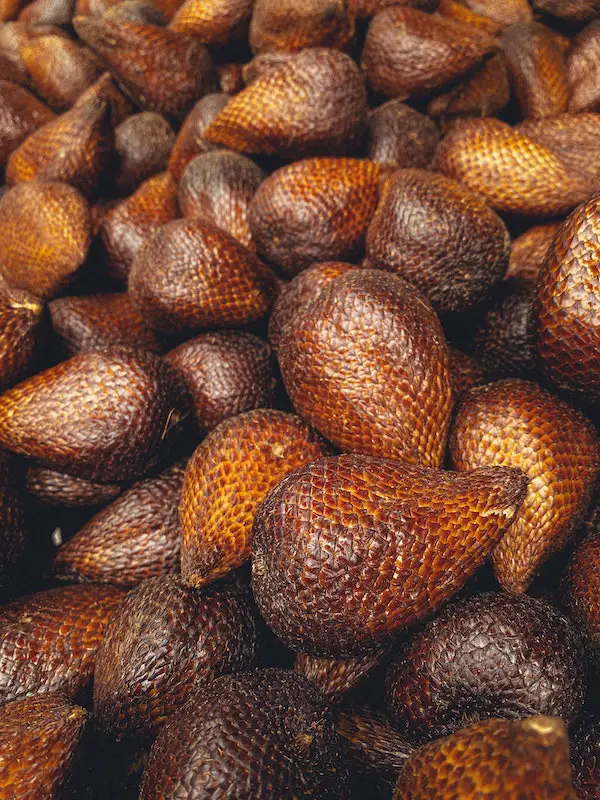
There’s a high chance you haven’t heard about salaks before. That’s because they’re native to Sumatra and Java in Indonesia, and they’re most probably only grown there till now. Unless you go to Indonesia with your family on the winter break, no salaks for you!
What’s special about salaks is that their trees grow in groups. They only grow on Indonesian islands, and they don’t get exported a lot.
9. Jujube
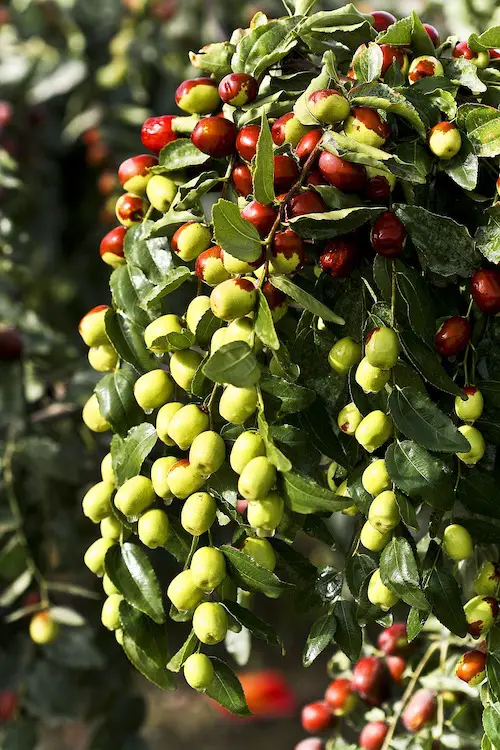
If you haven’t heard about jujube fruit before, there’s a high chance you heard about jujube oil if you’re a skincare enthusiast. It’s one of the best oils for smoothing out your skin and making it look shiny.
Jujube fruit looks like dates, which is why it’s sometimes called Chinese dates. However, instead of the Middle East, it’s grown in South Asia and various countries worldwide.
10. Kiwano
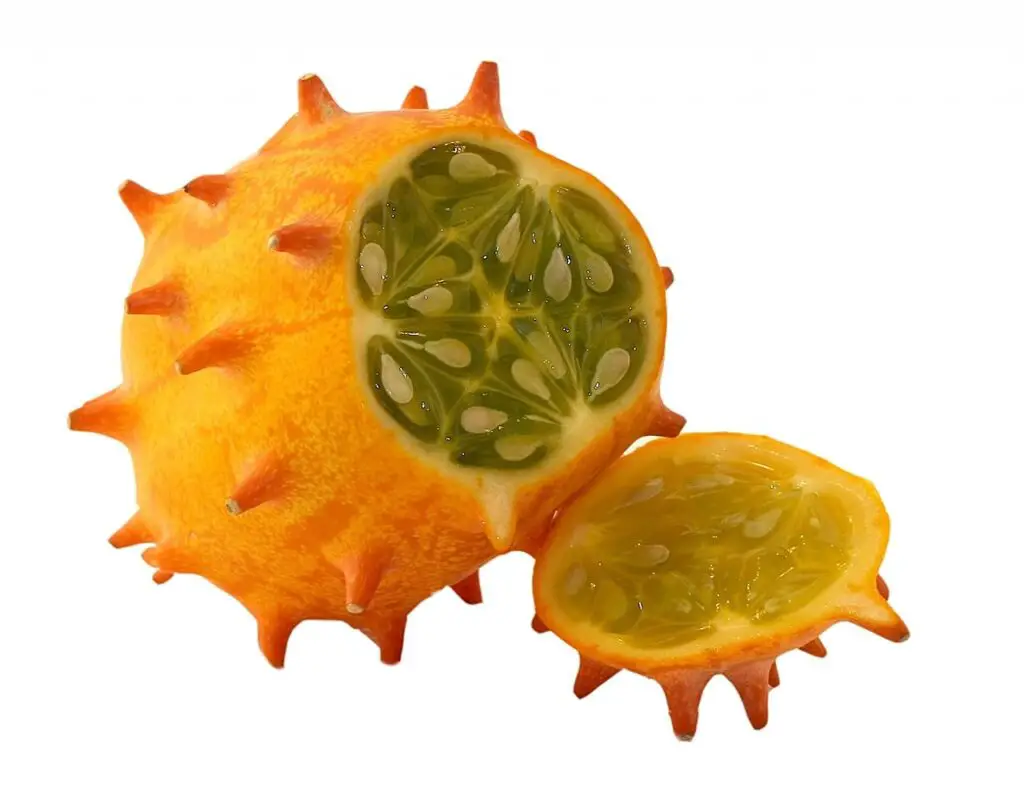
Kiwanos are among the oddest-shaped fruits in the world. They have spokes coming out of their exterior, which is why their common name is horned melons. They’re green on the inside, and their taste is supposedly sweet and mild.
You can eat the exotic fruit at any stage of its ripening; it’ll have an orange color when it’s completely ripe.
Kiwanos are most commonly grown in Africa, but you may find them in stores that sell odd fruits.
11. Oriental Melons
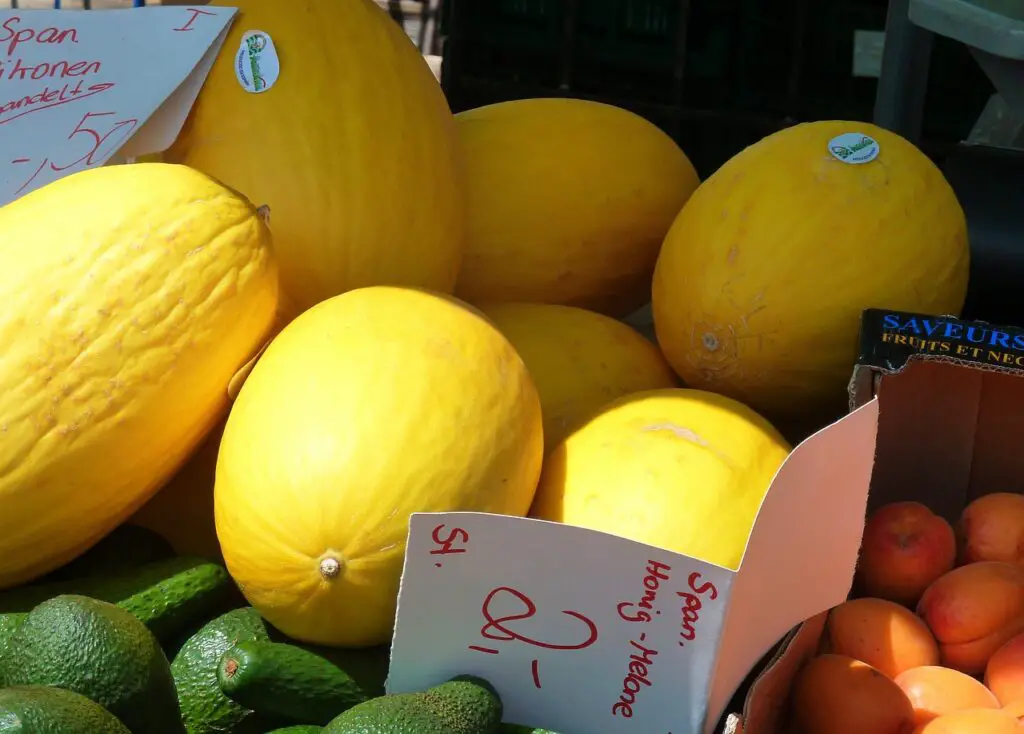
Although watermelons—the mothers of all melons—are round, there are a lot of varieties of them that aren’t round. The most common ones, which are also included on our list here, are oriental melons and horned melons.
Oriental melons are common in South Asia, and they have an oval shape with stripes running vertically. They’re slightly sweet, and they get greenish-yellow when they’re ripe.
12. Papaya
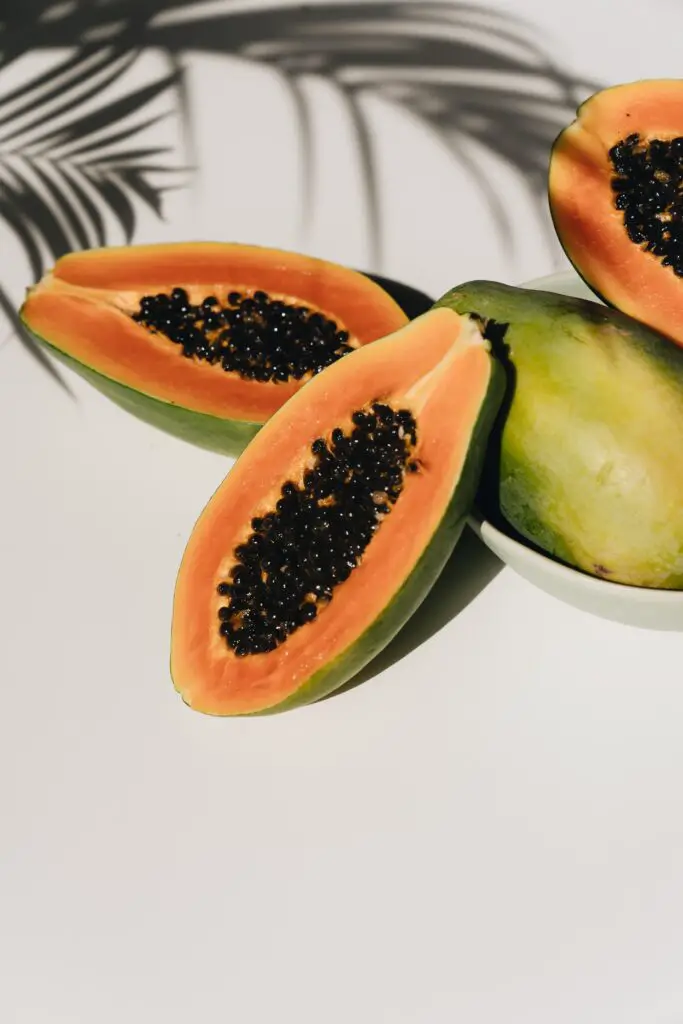
The papaya looks exactly like a pear, except it’s larger, and it has black seeds inside. The fruit originally only grew in the tropical areas in the United States. However, due to modern cultivation, it’s now being grown all over the world.
You can eat the whole papaya, including its seeds. Some people eat it raw, and some populations cook it as a dish.
13. Avocado
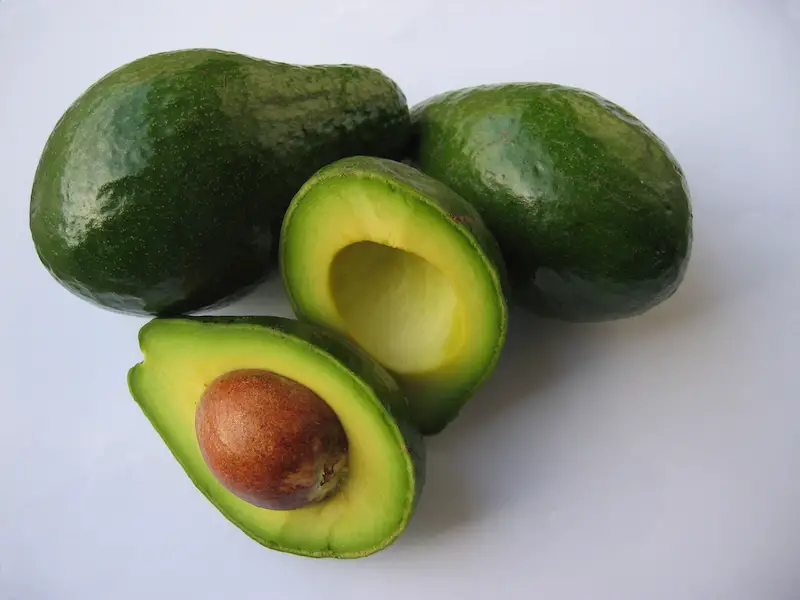
Avocado is originally a Mexican fruit, but it’s now planted in many countries worldwide due to modern cultivation. It rose in popularity after the Americans started using it in a wide variety of meals.
Avocado isn’t round—obviously!—, and it’s full of nutrients. It’s used primarily in healthy diet meals because of its high nutritional value.
14. Pear

Pears are among the most common fruits on earth; they’re grown all over the globe in a variety of types and colors. You can eat green, golden, yellow, and red pears in different regions around the world.
The fruit tastes sweet, which is why it’s commonly used in making drinks and cocktails. It comes in a lot of different sizes according to its region, and it sometimes contains seeds.
15. Feijoa
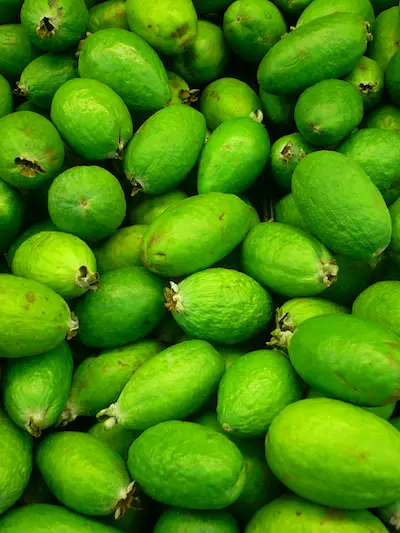
If there’s a scale for measuring a fruit’s roundness, the feijoa lies in the exact middle of it. It’s by no means round, being more on the long side. However, when you cut it horizontally, its cross-section will look perfectly round.
The fruit originates in South America, particularly in Brazil, Paraguay, Uruguay, and Columbia. It supposedly tastes sweet and delicious. People often compare it to the taste of guava.
16. Pineapple

If it’s not for mangoes, pineapples would’ve probably been dominating the tropical fruits around the world. They look nice, taste sweet, and have a multitude of nutritional benefits.
Pineapples can be used in drinks, desserts, and cocktails. They’re also used as a pizza ingredient in some areas around the world, but we prefer not to talk about that!
Anyway, a pineapple tastes the best when it’s eaten raw, but it can cause mouth ulcers if it’s consumed in large amounts due to its high acidity.
17. Cherimoya
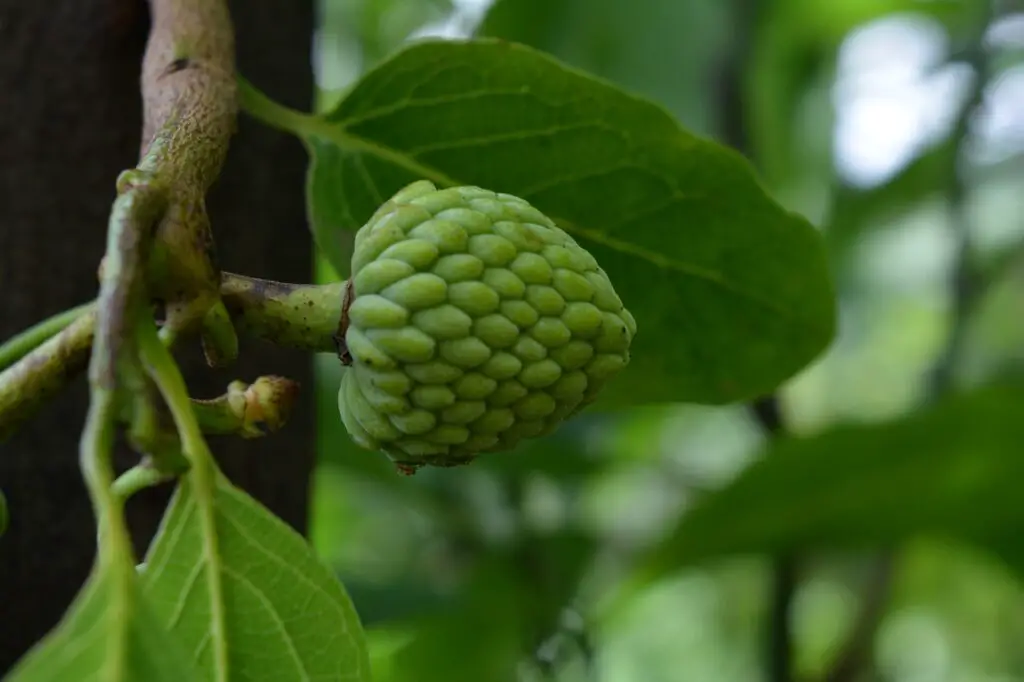
The cherimoya fruit could have gotten away with being round if it wasn’t for its scaly skin. When you cut it in half, it looks a bit like an apple, except it’s more elongated.
The fruit originated in Central America, and it’s widely believed that it got famous because of Mark Twain. He claimed that it’s the most delicious fruit known to man. The fruit tastes creamy, and its seeds are edible too, but we’ll have to disagree with Mark on this one!
18. Pitaya
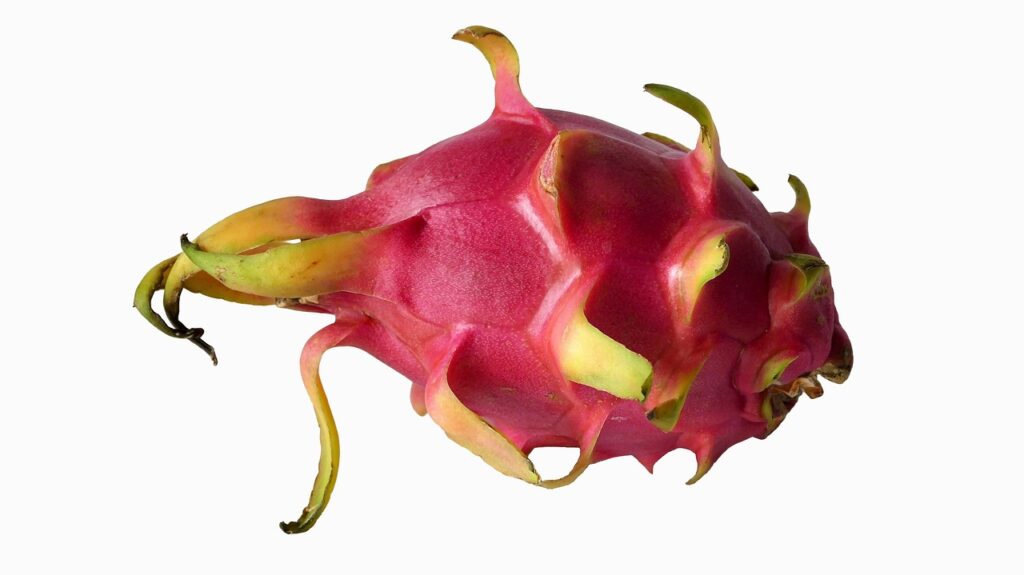
Pitayas, otherwise called dragon fruits, are among the most beautiful fruits grown on earth, and they’re also among the most odd-shaped ones. Their vibrant magenta color is their most distinctive feature, along with the green stems that come out of their outer layers.
Pitayas were originally found in the US, but they’re now grown in multiple regions, most famously Mexico, El Salvador, South America, Nicaragua, and Costa Rica.
People who’ve tasted pitayas say they’re a bit sour, which is why they’re mostly eaten raw without adding them to any drinks.
19. Tamarillo
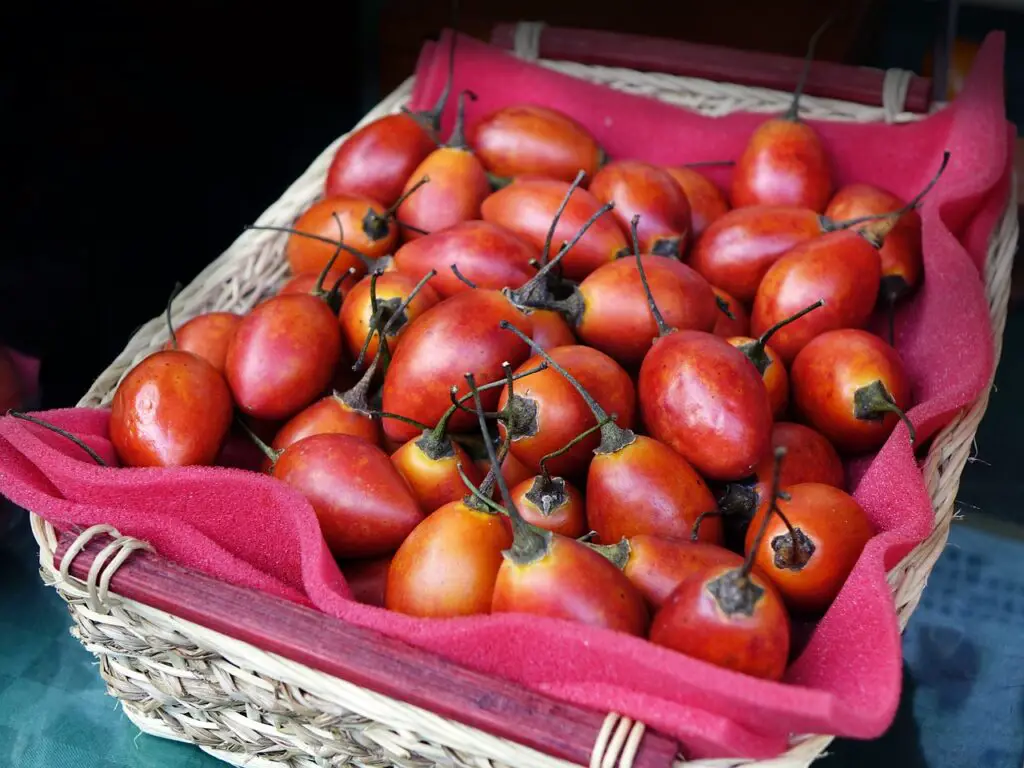
Tamarillos are small. They grow on Indian trees, but they’re famous all over the world.
Despite their small sizes, Tamarillos contain a lot of nutritional compounds; they’re pretty good for your health.
You’ll find these fruits in a variety of colors, including orange, red, and yellow. Each color presents a different stage of ripening—the red phase tastes very sour, and it gets sweeter as you move down the color scale.
20. Mulberry
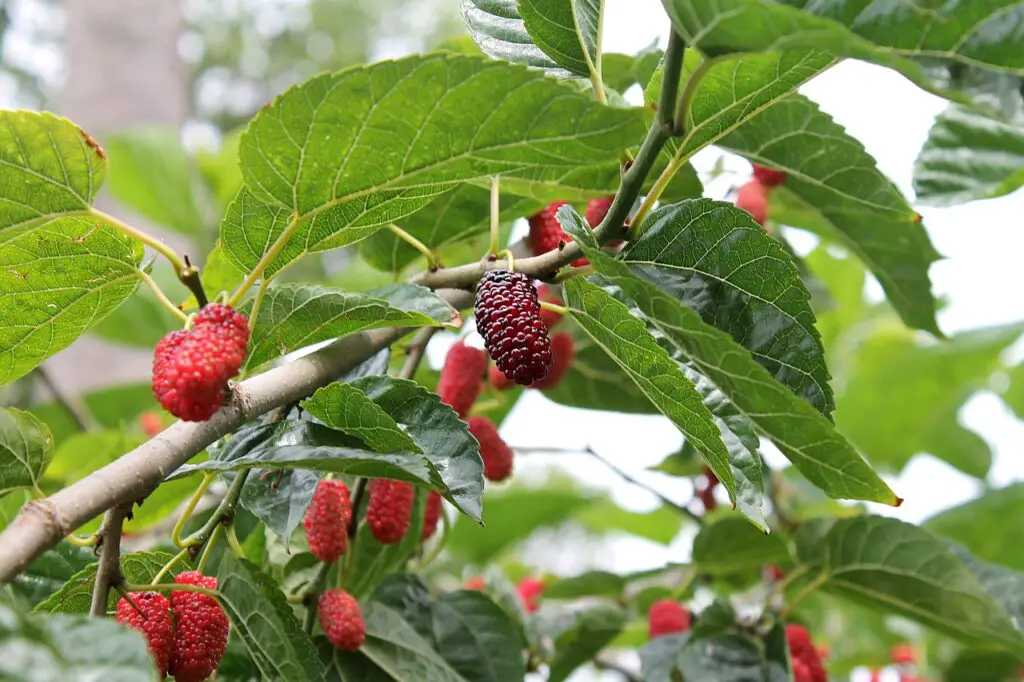
Mulberry comes from the same family as blue and blackberry, but it’s a fruit that isn’t round. Instead, it’s formed of dozens of small spheres, and it’s about the length of a human finger.
Mulberries have around 200 varieties in different colors. The most common ones are black, red, and white. They’re quite delicious, and they’re used in a lot of desserts. However, they’re not as common because they mostly only grow in wild areas.
21. Strawberry
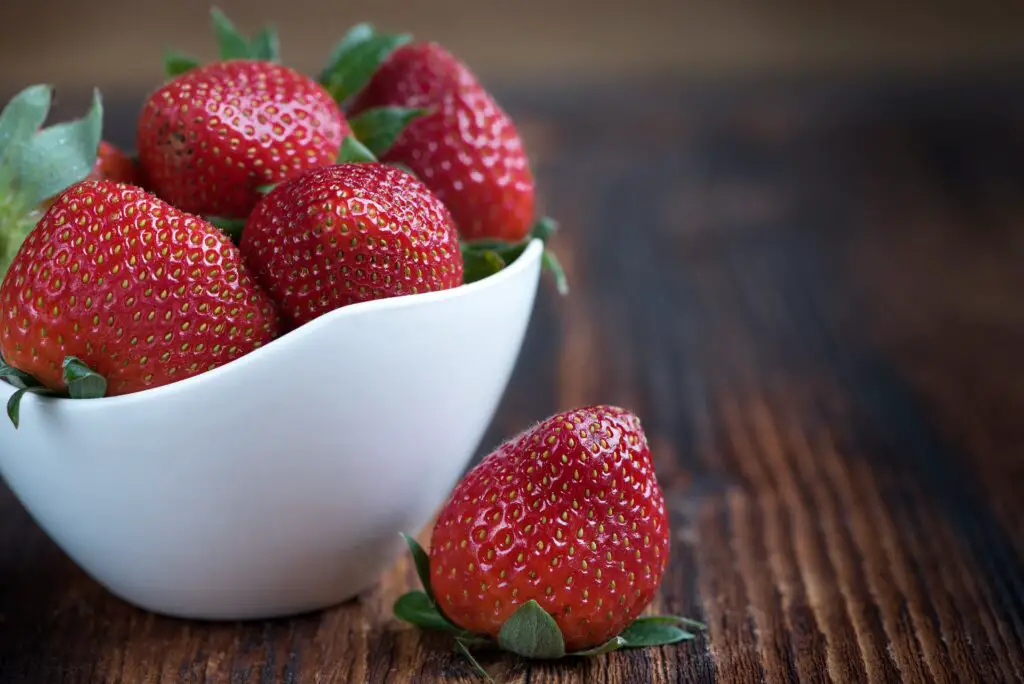
Well, strawberries are already pretty well known, so you probably know they’re not round. The first trace of strawberries goes back to the ancient Roman era, but those were wild strawberries. They were used for medicinal purposes, and they tasted nothing like today’s strawberries.
The first garden strawberry grew around the 18th century, which is a long while after the Roman era. Since then, it’s been used in desserts and beverages because of its sweet taste and attractive color.
22. Noni
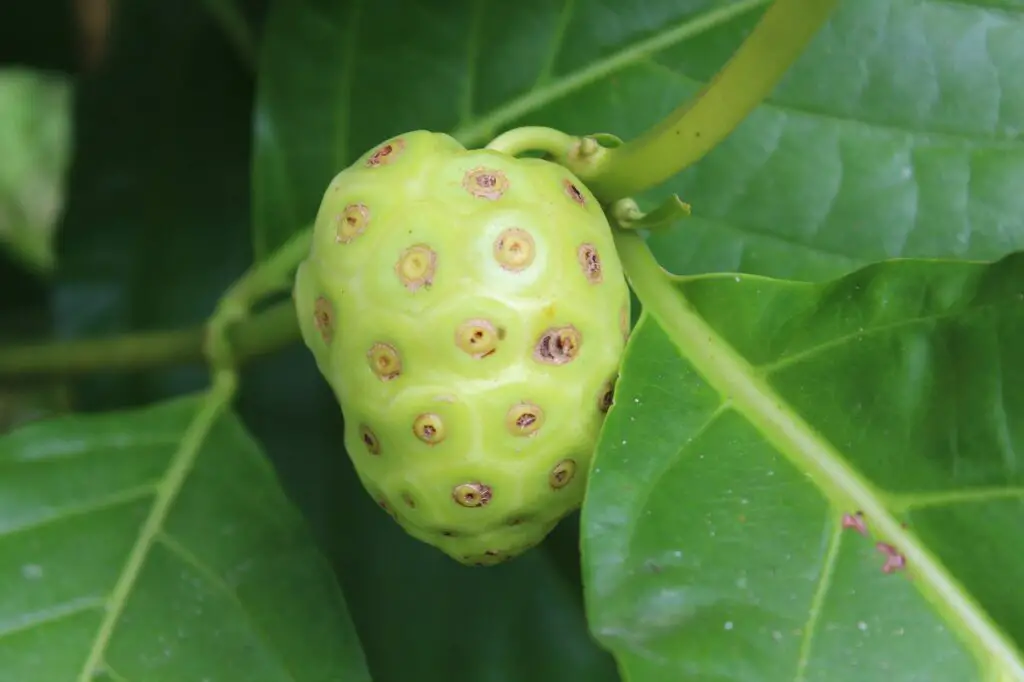
If you don’t know the word noni, you may be familiar with famine fruit instead. Nonis are called famine fruits or starvation fruits because they have a stinky smell. When they’re ripe, their color becomes translucent, and their odor becomes pungent and intolerable.
We believe they’re called that way because they’re so bad that people prefer starvation over eating them, but we can never be sure. There are also some claims that nonis were used for medicinal purposes back in the day.
Nowadays, they’re cooked with curry in some regions.
23. Buddha’s Hand
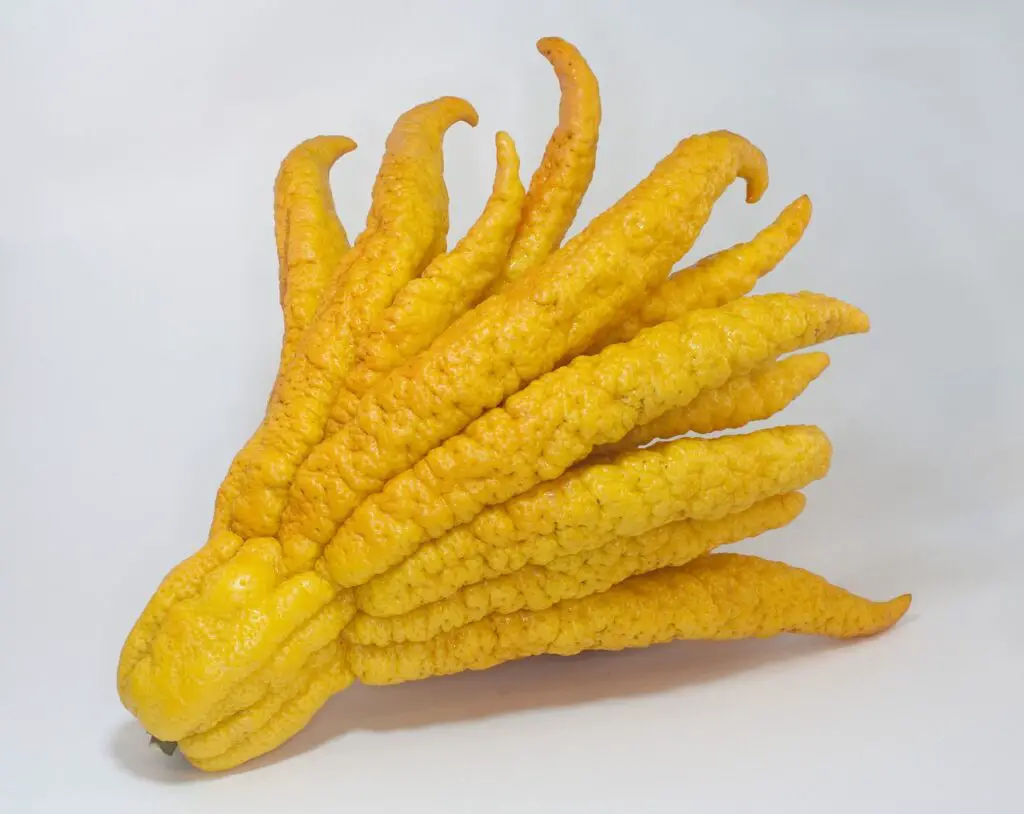
You probably never heard about this fruit before because, let’s face it, who would want to eat a fruit called ‘Buddha’s hand?’
The answer is no one; that’s why this fruit is commonly used for ornamentals rather than eating. Some say it looks like an octopus, and some others claim it looks like a hand with many fingers. Obviously, the latter ones won.
Buddha’s hands belong to the citrus family, and they don’t have juice, pulp, or seeds.
24. Raspberry
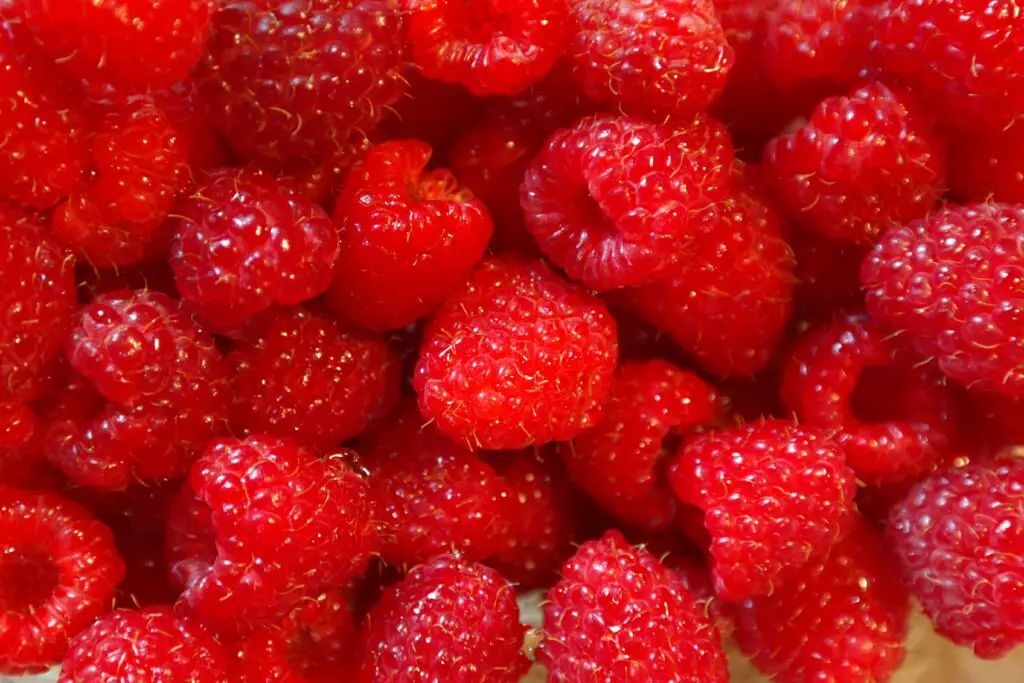
Raspberries are the third member of the berries family on our list. They’re not round, and they actually look a lot like mulberries. However, raspberries are smaller and more rounded than mulberries, which are a bit elongated.
Plus, raspberries have a bit of a sour taste, while mulberries are plain-out sweet.
Native to Europe, these pink fruits’ origin goes back to the Roman era in Greece.
Do You Know Any Fruit That Isn’t Round?
It turns out there are a lot of fruits that aren’t round, right?
Most of us are only familiar with round fruits because they’re the most common ones around us. Take apples and peaches for example.
However, that doesn’t mean all fruits are round. There are plenty of fruits that are not round, and those above are the most popular ones.
If you think we’ve missed a couple of fruits, we’d love to hear about other non-round fruits!
